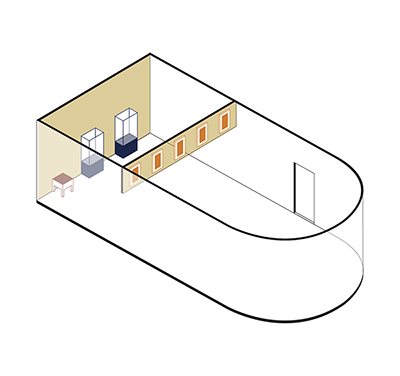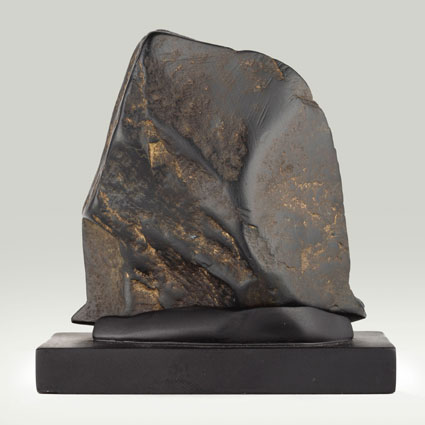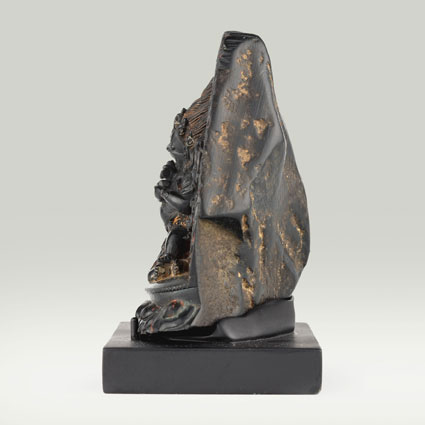Shadbhuja Mahakala – The "Six-armed Great Black One"
See it in the Museum

Chapel
Orientation 3
Display 5

ABS 169
Code: ABS 169
Country: Tibet
Style:
Date: 1450 - 1550
Dimensions in cm WxHxD: 9.2 x 8.5 x 5.7
Materials: Grey stone
Sadbhuja Mahakala – The Six-armed Mahakala
Carved in black stone with traces of red pigment and gilding, this image represents the famous wisdom protector Mahakala “The Great Black One” under his six-armed aspect. Corpulent and fearsome, he has a dark skin, sometimes described as dark blue, a furious expression with gaping mouth, bulging eyes, and flaming hair standing on his head. He is adorned with the charnel ground bone ornaments and his six hands brandish various attributes among which the curved blade and the skull cup, a snare and a double drum, a skull garland and a part of the elephant flayed skin covering his back.
This form of Mahakala is a manifestation of Avalokiteshvara, bodhisattva of Compassion under a wrathful aspect praised to swiftly overcome the obstacles standing on the way towards Buddhahood. This quality is illustrated by the protector trampling on the Hindu god Ganesha considered as the Lord of hindrances and obstacles.
Carved in black stone with traces of red pigment and gilding, this image represents the famous wisdom protector Mahakala “The Great Black One” under his six-armed aspect. Corpulent and fearsome, he has a dark skin, sometimes described as dark blue, a furious expression with gaping mouth, bulging eyes, and flaming hair standing on his head. He is adorned with the charnel ground bone ornaments and his six hands brandish various attributes among which the curved blade and the skull cup, a snare and a double drum, a skull garland and a part of the elephant flayed skin covering his back.
This form of Mahakala is a manifestation of Avalokiteshvara, bodhisattva of Compassion under a wrathful aspect praised to swiftly overcome the obstacles standing on the way towards Buddhahood. This quality is illustrated by the protector trampling on the Hindu god Ganesha considered as the Lord of hindrances and obstacles.





